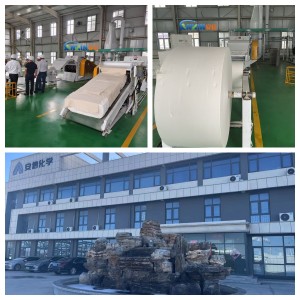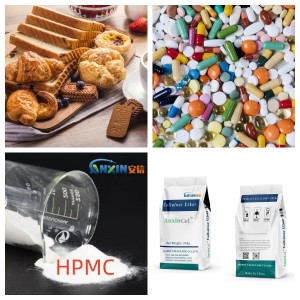Hydroxypropyl methylcellulose (HPMC) is a commonly used hydrophilic polymer, widely used in controlled-release tablets and sustained-release formulations. The drug release mechanism from HPMC-based tablets primarily relies on the gel layer formed upon contact with water. The drug diffusion rate is influenced not only by the physical and chemical properties of HPMC but also by the thickness of the gel layer. Changes in gel layer thickness directly affect the drug diffusion path, diffusion resistance, and dissolution rate, making it a key consideration in the design of controlled-release formulations.
1. Gel layer thickness determines the length of the drug diffusion path. When a tablet comes into contact with water, HPMC rapidly absorbs water and swells, forming a viscoelastic gel layer on its surface. Drug molecules must pass through this gel layer to diffuse into the external medium. A thicker gel layer lengthens the drug diffusion path and increases the corresponding diffusion resistance, slowing the drug release rate. Conversely, a thinner gel layer allows the drug to diffuse more quickly, resulting in faster release. Therefore, gel layer thickness largely determines drug release kinetics.
2. Gel layer thickness also affects drug release stability. In an ideal controlled-release system, the gel layer should remain relatively stable to achieve near-zero-order release. However, in practice, if the gel layer is too thin, it may rupture due to erosion by the external medium or uneven tablet surface structure, leading to a sudden acceleration of drug release, a phenomenon known as “burst release.” Conversely, a thicker gel layer is more resistant to mechanical stress and erosion by the external medium, thereby maintaining a stable drug release profile and improving the controlled release efficacy and predictability of the formulation.
3. Gel layer thickness is regulated by multiple factors. Its formation rate and final thickness are closely related to the viscosity grade, degree of substitution, and dosage of HPMC. High-viscosity HPMC forms a denser and thicker gel layer upon swelling, significantly slowing drug diffusion; low-viscosity HPMC, on the other hand, forms a relatively loose gel layer, allowing drug diffusion to proceed more easily. Furthermore, a higher HPMC content in the formulation results in a thicker gel layer and greater diffusion resistance. The solubility of the drug itself must also be considered: If the drug is highly soluble, it will dissolve rapidly in the gel layer and accumulate osmotic pressure, causing the gel layer to further expand and thicken, thereby increasing diffusion resistance.
4. The dynamic changes in the gel layer also have a significant impact on the drug release process. In the initial release phase, the gel layer is thin, allowing rapid drug diffusion. Over time, the gel layer gradually thickens, slowing the drug diffusion rate. Once the gel layer thickness reaches a certain level, drug release may gradually shift from diffusion-controlled to dissolution- or erosion-controlled. Therefore, gel layer thickness not only determines the diffusion rate but also influences the dominant release mechanism.
5. HPMC gel layer thickness plays a critical role in controlled drug release systems. Increased thickness prolongs the diffusion path, increases resistance, slows the release rate, and improves system stability and controlled release performance. Insufficient thickness, however, can lead to overly rapid or burst release. By properly selecting the HPMC viscosity grade, dosage, and formulation ratio, gel layer thickness can be controlled to achieve an ideal drug release profile. This mechanism not only provides a theoretical basis for the design of sustained-release preparations, but also provides a guarantee for achieving effective and stable drug treatment in clinical applications.
Post time: Aug-26-2025

